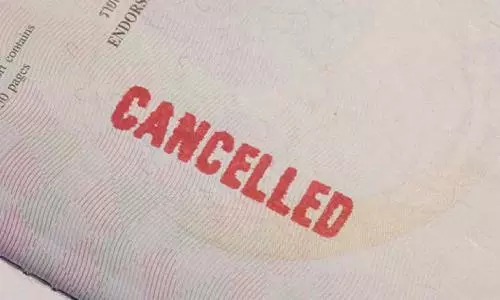
The 'Kerala Model' of snake-bites
text_fieldsRepresentational image only
"Shehla Sherin was a girl who should have been able to fly like a buttefly and reap the beauty of this planet. But her name has now become synonymous with a life extinuished by the poisonous wind from our social ethos and authorities. Her little brother and sister, while all set to to greet her with a 'surprise bouquet' of the roses she had nurtured in their yard, had hardly any clue that they were instead destined to receive her lifeless body – a scene that would move even the stoniest heart. Post her demise, even when Shehla's friends shouted slogans at their loudest possible, it was more tears than message that flowed.
Shehla, a fifth standard student of Govt Sarvajana Higher Secondary School of Sulthan Bathery in Wayanad district, got bitten by a snake inside her classroom. Although she and her classmates asserted that her injury was from a snake, the teachers did not respond promptly to take her to hospital immediately. It was only after calling her guardian to the school, that she was first taken to a nearby private hospital and later to the Taluk hospital. Despite having anti-venin in stock, the latter hospital referred the case to Kozhikode Medical College, lying 100 km away, losing crucial time in transit, critical for a snakebite case. She became unconscious on the way and so was taken to the nearest hospital, but that was too late to save her life.
Shehla's tragic death has opened a plethora of blame with practically the entire state up in revolt. The government has responded with disciplinary action against the school principal, vice principal, the teacher concerned and the doctor in the Taluk hospital on duty. The government has also ordered an inspection of the safety level of schools. The incident cannot be seen as a matter of dereliction of any teacher, doctor or even the government. More than that, it reflects a new attitude that has evolved in our society. Let us recall that Keralites are known to vie with one another on social media to give way to ambulances that dash from the northernmost Kasarkode to Kochi with critically ill patients. The same Malayali conscience, as we have witnessed many a time, would stand inertly frozen beside a human being stranded with bleeding wounds on the road. The teacher facing action here, is a typical example of this conscience. That is why he quickly rationalized that it was not snake bite but a wound from a sharp nail! Even when technical justifications are offered, one has to wonder if this same 'attitude' has not influenced that doctor. Or else, would he have thought why he should take the risk? The authorities would do well to also ask whether this flawed approach has any cure.
During the term of this government, two departments that have won more plaudits are education and health. In NITI Ayog's eduational quality index Kerala stood ands first for a second year in a row. Thanks to the public education drive of the state government, over the last three years nearly five lakh new students have been enrolled in public schools. The infra-strucure of government schools has also been considerably boosted. It is estimated that the state has over 45,000 hi-tech classrooms. Kerala is also a model in the distribution of text books, uniform and mid-day meals. A similar thrust is visible in the health sector too. From the face-lift of primary health centres right upto the acievement of overpowering deadly diseases like the Nipah virus, our health services have several achievements to its credit.
Even then, these departments are not without certain in-built failings, as proven by incidents including Shehla's death. They ratify the reproach that the state's gains in health and education sectors, proudly boasted as Kerala model, have not percolated to a sizeable section of the people. Statistics say that over 500 school buildings of Kerala are not safe. Of this, nearly 90 schools are in Wayanad district. Out of the 126 schools functioning across the state, 19 belong to this same district. When the Malabar region in general is neglected in the distribution of resources in education and health, Wayanad district bears the brunt of this neglect. Even now, casualty patients from Wayanad have to depend solely on Kozhikode Medical College. It is not for the first time that patients like Shehla lose their lives in a hospital on the way to that facility. A case that easily comes to memory is the moving tale of Anita, a pregnant tribal woman four years ago. With three foetuses in her womb, she was on the way to medical college escorted by her family, where she tried with three hospitals en route before descending from the ghat roads. At each of them, she lost one baby. And only because she was able to reach medical college hospital was she able to survive. And for the same reason, even as maternal and infant mortality rate are falling in Kerala, the figures of Wayanad remain nearly the same. In short, in backward districts like Wayanad, the much-made-of 'Kerala Model' remains beneath snake holes. The pertinent question at this hour is whether the authorities will be seized of the matter at least now.























